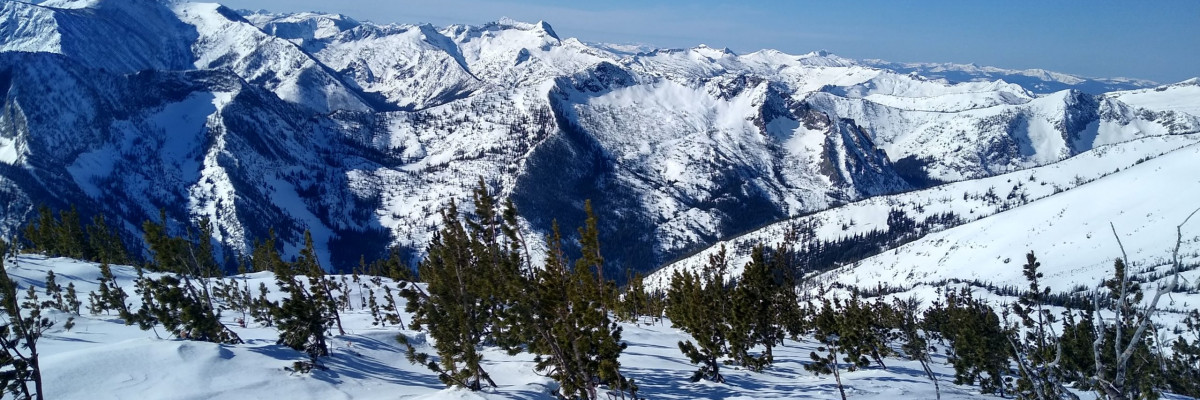The avalanche danger is LOW in the west central Montana backcountry. Use normal caution when traveling today to assess the snowpack and avalanche danger.
Good morning, this is Jeff Carty with the West Central Montana avalanche advisory for March 24, 2020. Today’s advisory is sponsored by onX maps. This advisory does not apply to operating ski areas, expires at midnight tonight, and is the sole responsibility of the U.S. Forest Service.
Weather and Snowpack
Mountain temperatures range from 22F to 27 F and are forecast to reach into the 40s above 6000′ today. Winds are forecast to be light, 11-13mph with strong gusts. Cloud cover will likely keep the sun off the slopes today so the snow will not soften up much.
We’ve received 0.1″-0.3″ of snow water equivalent (SWE), or about 1-3 inches of new snow overnight throughout the forecast area. Snow may begin falling this afternoon with 2-4″ expected at higher elevations.
As of yesterday conditions hadn’t changed much since Friday. Lower elevation, <6500’, and southern aspects continued to be in a melt-freeze cycle with good corn skiing if your timing was right. Too much sun or warming and things got downright sticky and heavy. With cooler temperatures forecast, cloud cover and a dusting of new snow, south faces may pose the problem of being too solid to get an edge in and sliding uncontrollably may be an issue in steeper sections.
North faces continued to have dry and in places soft snow. We’ve observed a variety of surfaces out there (video) including well-developed surface hoar and near surface facets that were readily sluffing on steep terrain. While not an issue currently, with further loading by wind or snowfall these could form a problematic weak layer. Pay attention to new snow depths and consistency as you tour. If the forecast snow piles up sufficiently it may consolidate into slabs and could be touchy. Look out for red flags such as shooting cracks. While not currently much of a risk, further accumulation, and terrain traps will increase the consequence of small slides.
The new snow we receive will be sluffing on all old snow surfaces out there today and loose dry avalanches are our primary concern above 6500’.
Below 6500’ loose wet avalanches are possible, if the clouds part and we get sun on upper elevations wet loose avalanches are possible above 6500’ as well.
Large cornices are still lurking out there, and some recent cornice fall was observed this weekend. Avoid traveling below cornices and stay well away from the edge when above.
Glide cracks are opening in isolated areas of the Bitterroot and Missions. These are the result of the entire snowpack sliding on a wet ground surface and they can slowly open for weeks at a time. They can also fail suddenly and unpredictably producing avalanches the full depth of the snowpack. Stay well away from slopes where glide cracks are present.
Bottom Line
Generally stable avalanche conditions exist throughout the forecast area. The main concerns are loose dry and loose wet avalanches. If new snow accumulates sufficiently to form slabs it will likely be touchy as it is landing on surface hoar, near surface facets and sun crust. Low avalanche danger does not mean no avalanche danger. Continue to practice safe travel protocols in case you find an exception to a generally stable snowpack. Travel one at a time in avalanche terrain, carry a beacon, shovel, and probe, and stay alert for signs of instability. Dig a pit. Look for red flags.
Please take a moment to read this message from Missoula Avalanche, Greater than the Sum of Our Parts.
Your observations are extremely helpful! If you get out, please take a minute to fill out the observation form, or shoot us a quick email at [email protected].
Ski and ride safe.














